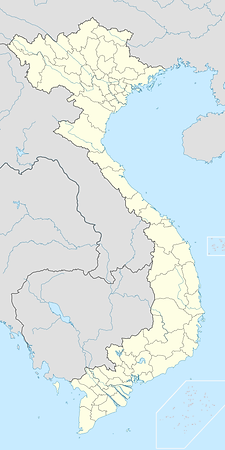top of page


Vietnam
WHERE WE WORK
Twelve million gallons of Agent Orange were sprayed over roughly 10 percent of South Vietnam, from the Demilitarized Zone in the north to the Mekong Delta in the south.
The U.S.’s official declared use of herbicides was to deny the enemy food and cover along the Ho Chi Minh Trail; reveal encampments; and push enemy forces back from the Mekong riverbank, greatly reducing their ability to ambush U.S. patrol vessels.
Researchers and the Vietnamese government continue to find varying levels of residual Dioxin in the soil of southern Vietnam and where the herbicides were previously stored—areas that are now designated Dioxin “hotspots.” There are 28 such hotspots with varying levels of residual Dioxin, all former U.S. bases in Vietnam, with the high possibility of exposing new generations to the remnants of toxic herbicides. Of these hotspots, the U.S. air bases at Da Nang, Phu Cat, and Bien Hoa were the most significant in need of immediate remediation. Other hotspots have been found to have elevated levels of Dioxin, although they may not be at the level where remediation is required.
Researchers from Columbia University School of Public Health estimated 2.1 to 4.8 million Vietnamese civilians lived in villages that were under the direct spray paths of Operation Ranch Hand. At least a million soldiers from the Army of the Republic of Vietnam (ARVN), as well as the Vietnam National Liberation Front (NLF) and North Vietnamese Army, were potentially exposed.

In 1999, the Vietnamese Red Cross estimated of the 3 million Vietnamese who live with compromised health, 150,000 were children with birth defects. Vietnam has discovered exposure to Dioxin has become a likely vector for many recurring conditions and illnesses, from Chloracne to Hodgkin’s Disease.
Since the late 1960s, Vietnamese scientists have been conducting epidemiological research on Dioxin exposure. They found that veterans who served in the south, as compared to those who did not, had increased rates of cancer, and nerve, digestive, skin, and respiratory disorders. Among the cancers found were throat cancer, acute/chronic leukemia, Hodgkin’s lymphoma and non-Hodgkin’s lymphoma, prostate cancer, lung cancer, soft tissue sarcoma and liver cancer. The international scientific community has not affirmed these research findings due to their lack of peer review.
Other than liver cancer—which some researchers believe are associated with higher rates of hepatitis, not exposure to Agent Orange—the above-mentioned conditions are recognized by the Department of Veterans Affairs as associated with exposure to Agent Orange-Dioxin and are eligible for compensation.
The Vietnamese government currently recognizes 31 birth defects as associated with parental exposure to Agent Orange, as well as birth defects with no known family history or cause. Many of these birth defects are those found in children born to U.S. female veterans who served in Vietnam which qualify for compensation.

“There is no doubt that during and after the war, many Vietnamese absorbed this very toxic material [dioxin]. It is our belief from toxicological research and epidemiological studies from many countries that this dioxin probably resulted in significant health effects in Vietnam.”
– Arnold Schecter and John Constable


bottom of page
